Have you ever wondered what the different types of biomass are? If so, this article will help you in understanding the main sources of biomass energy.
Biomass Energy Examples
Our list comprises of eight different biomass examples. Where appropriate, we have described the bioenergy technologies used with each of them.
1. Wood
First up in our list of the different types of biomass is wood. This is the main source of biomass that power companies use to generate electricity. It can be burnt in order to produce steam which can then drive a turbine in order to generate power.
The use of wood to generate power is considered carbon neutral due to the fact that growing trees absorb carbon dioxide and then release it back into the atmosphere when burnt. Therefore, it is far more environmentally friendly than using fossil fuel sources such as coal, oil, and gas.
Biomass often includes the different wood types described below, but in theory, you can consider any type of wood to be a source of biomass.
Biomass Tree Crops
These are fast-growing tree crops such as willow and poplar that are purposefully grown for the biomass industry. They are then harvested and sold to power companies who burn the crop instead of traditional fuels such as coal and oil.
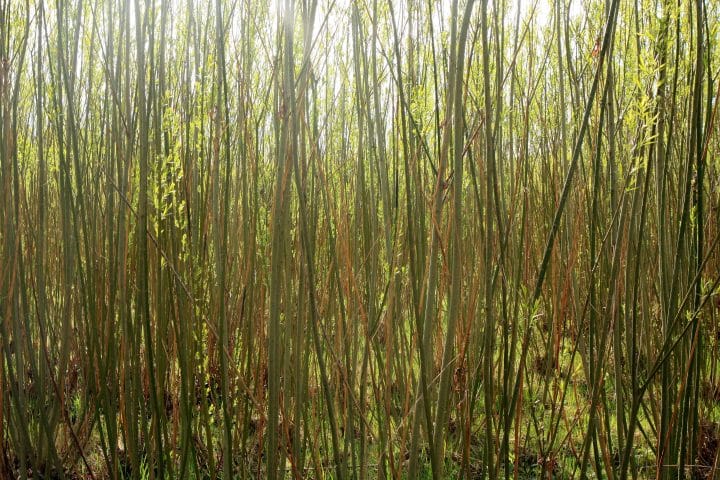
Wood Waste & Offcuts
When wood is used in manufacturing, it often produces a lot of waste. This can include anything from chunky offcuts to wood clippings and sawdust. Most manufacturers will have a process in place whereby their wood waste is collected, stored, and then sold to a reprocessing company who might then sell this on to the biomass industry.
Logs & Tree Bark
Most logging that takes place across the world if for the purpose of manufacturing, i.e. the wood is sold and something is made from it. Sometimes, however, logging takes place for other reasons such as land clearance. Therefore, we can consider any surplus logs and/or tree bark to be a type of biomass.
2. Food Crops
Second in our list of biomass energy examples are food crops. Many of these are suitable for use in biofuels such as bioethanol and biodiesel. They are less likely to be used for power generation. When we use food crops as biomass, they are sometimes referred to as ‘energy crops’.
Some of the more popular biomass energy crops are described below.
Starchy Crops
These can include wheat, corn, sugarcane, and potatoes to name a few. Crops high in starch are perfect for creating bioethanol which is mainly used as an alternative to gasoline. It can, however, also be used for heating purposes in a bioethanol fireplace.
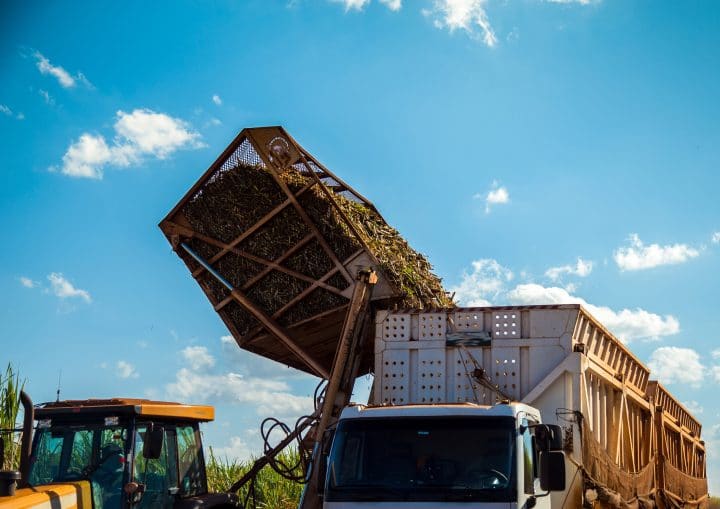
Oily Crops
These can include crops such as canola/rapeseed, soybean, and sunflower. Oily crops like these are used in the production of biodiesel which is an alternative to diesel fuel. Animal fats are also often found in the production of biodiesel.
The main drawback to biodiesel is that it consumes far more landmass than bioethanol for the production of the same amount of fuel. It is therefore much more expensive to produce.
3. Animal Waste
Animal waste is another source of biomass. Solid animal waste, liquid slurry, and used bedding can all be collected and processed into biogas.
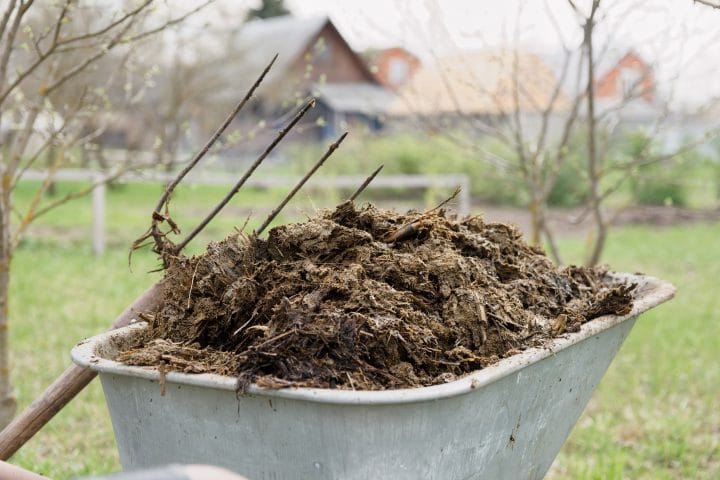
Biogas is created inside an anaerobic digester. This is a sealed chamber which removes oxygen and heats the biomass in order to help speed up decomposition. During decomposition, methane is released and then captured as biogas later use.
Many people across the globe use biogas as a fuel source in heating, cooking, and even transportation. Biogas is less common in transportation than bioethanol and biodiesel due to the fact that traditional combustion engines cannot be converted to run on it.
Biogas is even sometimes used as a replacement for natural gas in gas-fired power plants.
4. Human Waste
Like animal waste, we can also use human waste as a type of biomass. Whilst this is less common, some waste treatment plants are starting to make use of human waste to produce biogas.
The process for this is very similar to animal waste and uses an anaerobic digester (biodigester) to capture biogas.
5. Garden Waste
Yes, we can even use the waste from our own gardens as a source of biomass energy. Everything from grass clippings to compost, weeds and plant stems can be considered a type of biomass. Some farmers also grow hay fields for the purpose of biomass.
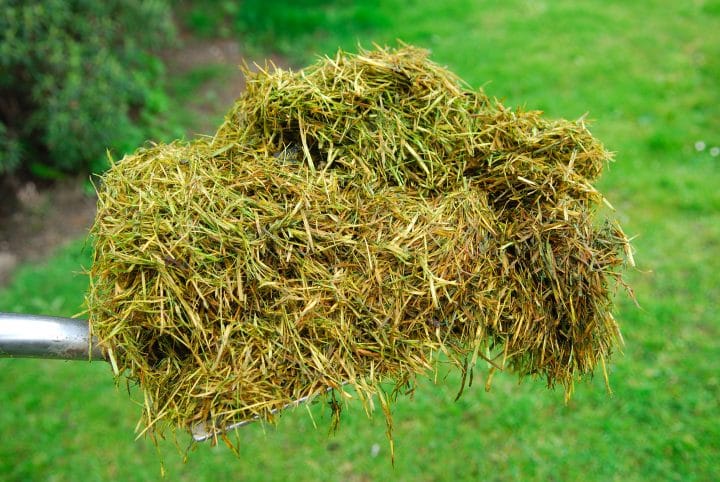
Garden waste can be used in an anaerobic digester, just like animal waste and human waste. This then produces biogas and can be used for cooking, heating, transportation, or power generation.
6. Hemp
Hemp is another one of the main types of biomass. Whilst we often relate hemp to the production of marijuana, the biofuel industry also makes use of the plant.
Whilst starchy food crops are used to create standard bioethanol, plant fibers (such as those found in hemp) can also be used to produce a variation of it known as ‘cellulosic ethanol’.
Hemp has many benefits over starch/sugar crops when used as a source of biomass. The key benefit is that when cellulosic ethanol is used as a biofuel, it releases less carbon dioxide and other greenhouse gases into the atmosphere. This helps to improve the environmental credentials of hemp-based biomass fuels.
Another benefit of hemp is that it is fast-growing and therefore can be replenished more frequently than traditional annual or bi-annual crops.
7. Municipal Wase
We also consider municipal waste to be a source of biomass due to the contents of the waste. Every day, businesses and households dispose of vast quantities of waste, some of which will contain organic matter such as food.
Municipal waste is sometimes burnt for power production and many power companies have converted traditional coal, oil, and gas power plants to burn rubbish instead. This is known as Refuse Derived Fuel (RDF) and although it is not considered 100% biomass, it does involve some organic matter.
The key drawback to municipal waste over actual biomass is that garbage often contains lots of non-organic matter such as plastics. These can create harmful greenhouse gases when burnt and are not carbon neutral.
8. Landfill Gas
Last in our list of biomass examples and closely related to our previous point on municipal waste is landfill gas. Whilst garbage can be used in the RDF process, it can also produce natural gas when left to rot at a landfill site.
Landfill gas is almost identical to biogas and is produced naturally at landfill sites as waste decomposes. Some waste companies have adapted their landfill sites in order to collect this gas which can then be used in the same way as biogas.
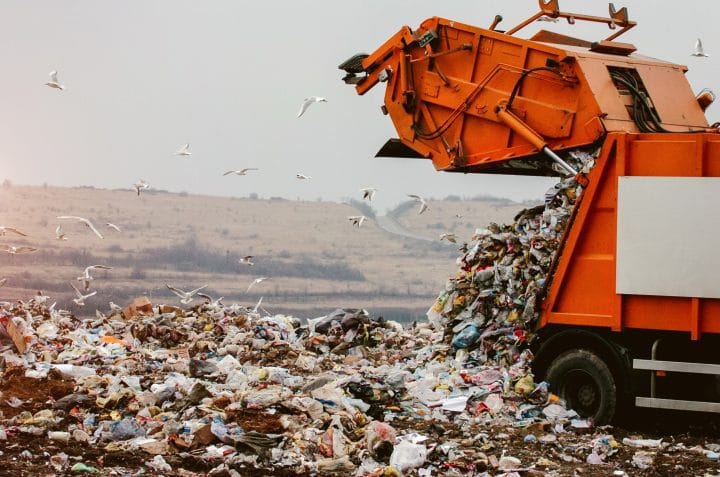
If you are interested in learning more about landfill gas, then the Renewable Energy Association have an excellent article covering this topic which you can find here.
Biomass Examples – Overview
So there we have our eight different biomass examples. All of these relate to the use of organic matter for energy production. This can involve the generation of electricity, the production of biofuels, and even the production of biogas.